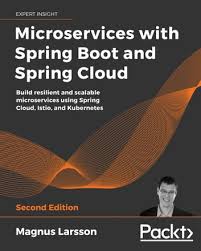Microservices with Spring Boot and Spring Cloud: Building Resilient and Scalable Applications
1. Introduction
Microservices architecture has emerged as a popular approach for building complex, scalable, and resilient applications. By breaking down large monolithic applications into smaller, independent services, microservices offer numerous advantages, including improved flexibility, scalability, and maintainability.
Spring Boot and Spring Cloud provide a powerful foundation for building microservices. Spring Boot simplifies the development process, while Spring Cloud offers essential tools and frameworks for building distributed systems.
This whitepaper explores the core concepts of microservices architecture, the role of Spring Boot and Spring Cloud, and best practices for building resilient and scalable microservices.
2. Microservices Architecture: A Brief Overview
A microservices architecture consists of a collection of small, independent services that communicate with each other through well-defined APIs. Each service is responsible for a specific business capability and can be developed, deployed, and scaled independently.
Key Benefits of Microservices Architecture:
- Scalability: The ability to scale individual services independently.
- Resilience: Improved fault isolation and recovery.
- Flexibility: Easier to adopt new technologies and frameworks.
- Team Autonomy: Smaller, independent teams can develop and deploy services.
3. Spring Boot: A Foundation for Microservices
Spring Boot simplifies the development of Spring-based applications by providing auto-configuration, embedded servers, and opinionated defaults. Key features for microservices development include:
- Auto-configuration: Automatically configures Spring beans based on classpath dependencies.
- Embedded Servers: Provides embedded servers like Tomcat and Jetty for easy deployment.
- Actuator: Exposes endpoints for monitoring and management.
- Spring Security: Provides security features like authentication and authorization.
4. Spring Cloud: Building Distributed Systems
Spring Cloud offers a suite of tools for building distributed systems, including:
- Spring Cloud Config: Centralized configuration management.
- Spring Cloud Netflix: Integration with Netflix OSS components like Eureka, Hystrix, and Zuul.
- Spring Cloud Gateway: API gateway for routing and filtering requests.
- Spring Cloud Sleuth: Distributed tracing for monitoring and troubleshooting.
5. Building Resilient Microservices
- Circuit Breaker Pattern: Use Hystrix to prevent cascading failures and gracefully handle errors.
- Retry Pattern: Implement retry mechanisms to handle transient failures.
- Rate Limiting: Limit the rate of requests to protect services from overload.
- Bulkhead Pattern: Isolate critical components to prevent failures from affecting the entire system.
- Timeouts and Timeouts: Set appropriate timeouts to avoid long-running operations.
6. Testing Microservices
- Unit Testing: Test individual components in isolation.
- Integration Testing: Test the interaction between services.
- Contract Testing: Verify that services adhere to their contracts.
- End-to-End Testing: Test the entire system from the user's perspective.
7. Deploying Microservices to the Cloud
- Containerization: Package microservices into Docker containers for portability and scalability.
- Container Orchestration: Use Kubernetes to manage and deploy containers.
- Cloud Platforms: Deploy to cloud platforms like AWS, Azure, or GCP.
8. Security Considerations
- Authentication and Authorization: Implement robust authentication and authorization mechanisms.
- Data Encryption: Protect sensitive data with encryption.
- Secure Communication: Use HTTPS to encrypt network traffic.
- Input Validation: Validate user input to prevent attacks like injection and XSS.
9. Future Trends
- Serverless Computing: Leverage serverless functions for event-driven architectures.
- AI and Machine Learning: Integrate AI and ML capabilities into microservices.
- Edge Computing: Deploy microservices closer to the edge for low-latency applications.
Conclusion
By following the principles outlined in this whitepaper, you can build resilient, scalable, and maintainable microservices. By leveraging the power of Spring Boot and Spring Cloud, you can streamline the development process and accelerate time-to-market.
References:
- Spring Boot Documentation: https://spring.io/
- Spring Cloud Documentation: https://spring.io/projects/spring-cloud/
- Kubernetes Documentation: https://kubernetes.io/
- Docker Documentation: https://docs.docker.com/
- Netflix OSS: https://netflix.github.io/
- Microservices Architecture Patterns: https://martinfowler.com/articles/microservices.html
Note: To create a comprehensive whitepaper, consider adding more in-depth explanations, code examples, and real-world case studies. You may also want to explore advanced topics like service mesh technologies (Istio, Linkerd) and observability tools (Prometheus, Grafana).



